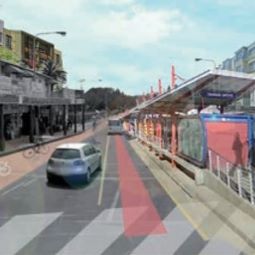
Banner

Louis Botha… Risks and opportunities
ANT KATZ
The initial phases of the mega-project involve the Louis Botha Avenue Development Corridor; the Empire-Perth Development Corridor; and the Turffontein Development Corridor.
Last week Jewish Report Online showed how the city was planning to increase the population density six-fold and rezone areas along Louis Botha Avenue to as much as eight storey buildings. The City Council is at present installing bulk services to meet this need as well as building six bus stations between Orange Grove and Wynberg.
Fixing severe urban inefficiencies
The City is characterised by severe urban inefficiencies and an urban form and social profile that makes it one of the most inequitable cities in the world, according to the City’s own reports. This apartheid-era legacy affects almost every town and city in the country and Johannesburg plans to fix it.
“The distribution of urban densities, the low productivity of land use, high levels of energy consumption and carbon emissions, as well as unsustainable and distorted per capita expenditure on infrastructure, are but some of the issues the City has to address in changing course to ensure a better urban future,” say the city planners.
The plan to fix all this has enjoyed the unqualified buy-in of all political parties and is unlikely to see any changes with the new administration.
The urban restructuring and the improvement of urban efficiencies that the City is embarking on will “re-stich the city together” the planners say, using the philosophy of TOD and its associated strategies. They believe it will build unity and social transformation and cohesion.
The programme deals with the triple transformational challenges of poverty, inequality and unemployment. Corridors of Freedom are fundamentally about creating a non-racial, non-sexist, socially and economically cohesive city using the twin programmes of TOD and Corridor Development.
The Corridors of Freedom is an initiative that seeks to build a new city along and around TODs, mass transit movement lines, in selected areas of the city to create housing, jobs and social opportunities in proximity to each other.
The objectives of energy efficiency, climate change mitigation, economic growth and social inclusion are re-enforcing and can be simultaneously achieved by compact, connected and resilient communities centred on the transit nodes in the Corridors of Freedom.
The rationale and characteristics of TOD is an approach to development that focuses high intensity mixed land uses within walking distance of a transit station or within a transit corridor. Redeveloping existing urban fabric around transit nodes within the Corridors of Freedom is a critical component of the development strategy.
To succeed, the city will use a strategy of creating a hierarchy of TODs and focus on creating compact, mixed-use, walkable urban environments. These will all be supported by civic spaces and amenities and create the ability to leverage investment opportunities.
Property-owners living in leafy suburbs that will abut the new higher density properties, will have to carefully consider the potential risk to the value of their properties, while investors will be considering buying and consolidating potential development sites for residential or business rental or sale. It would appear that the city will waive rezoning costs as they will be creating bulk rezoning of areas.
Related reads on this website:




